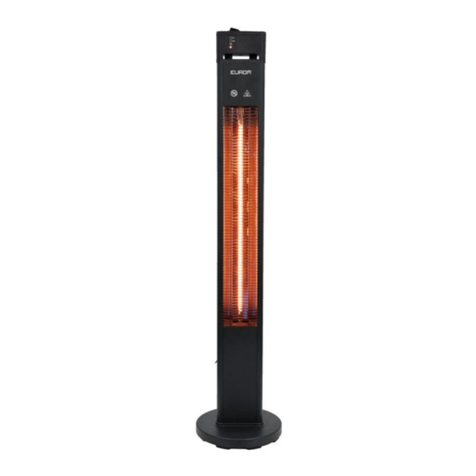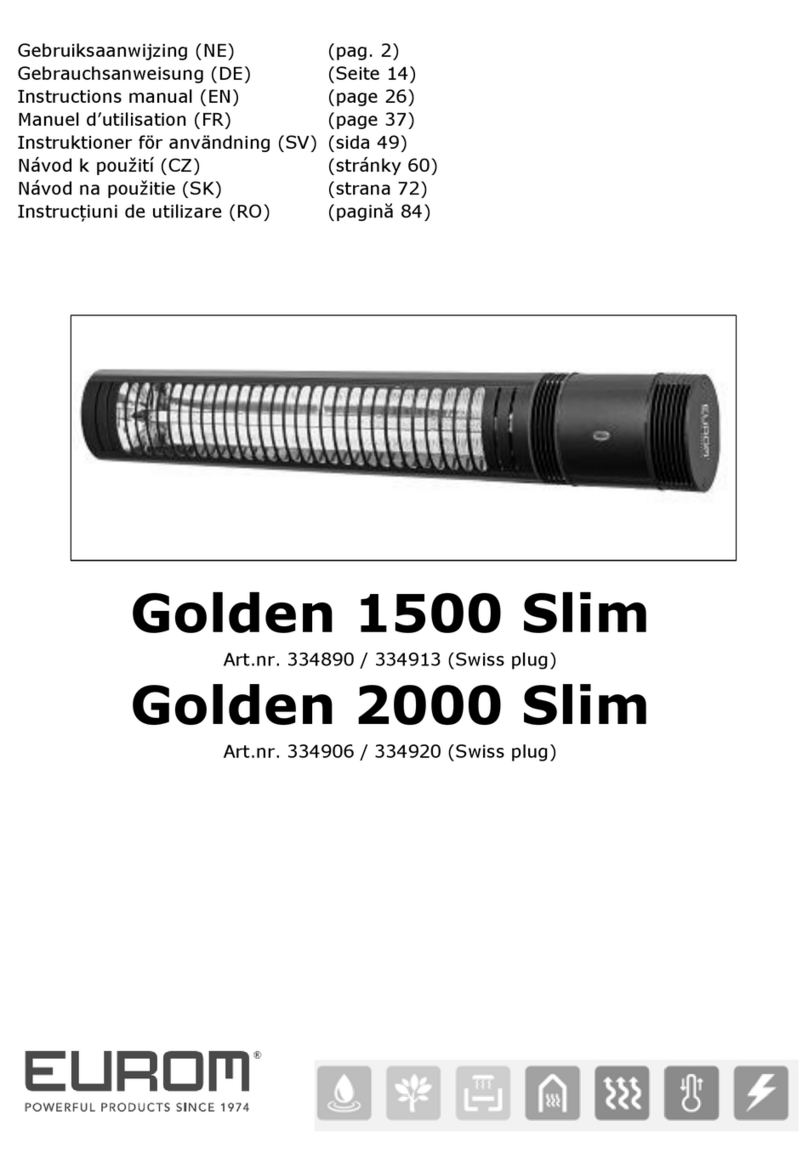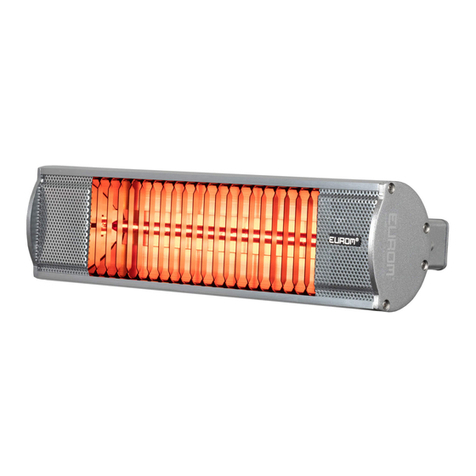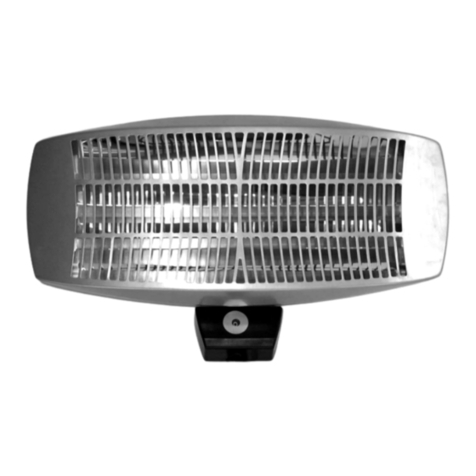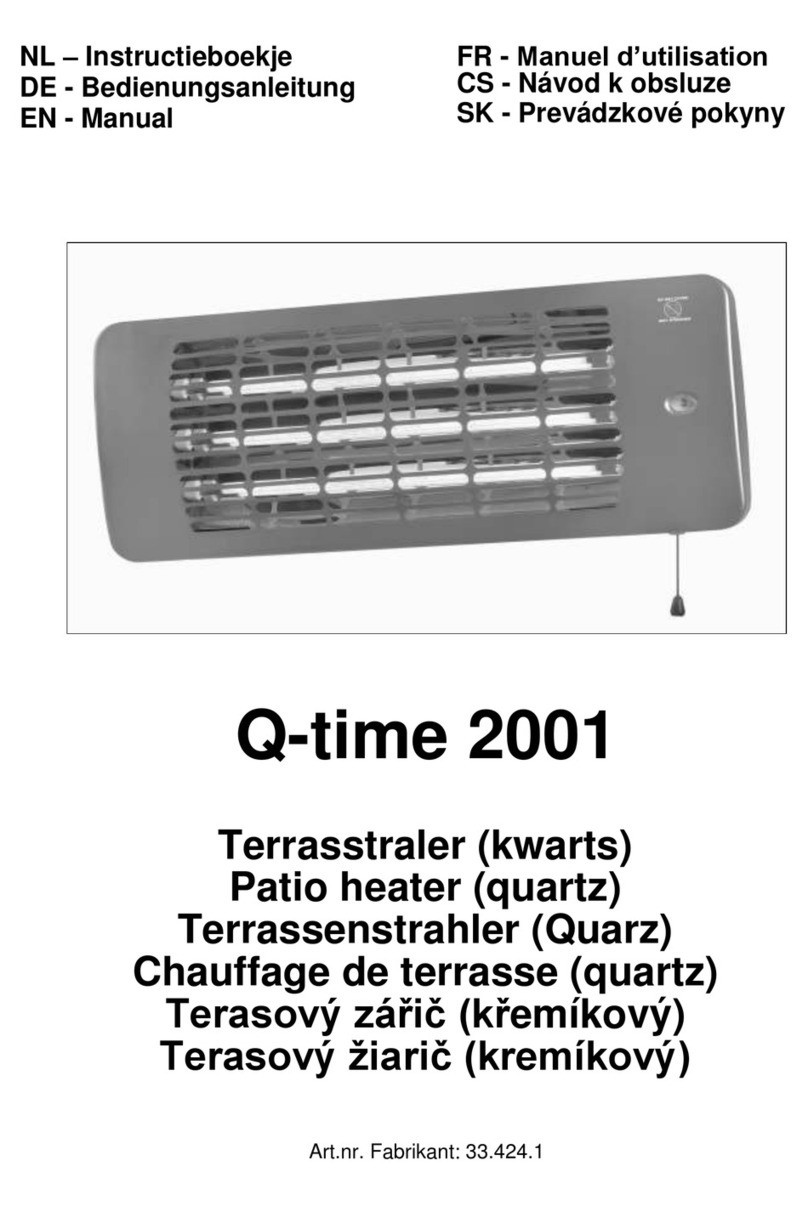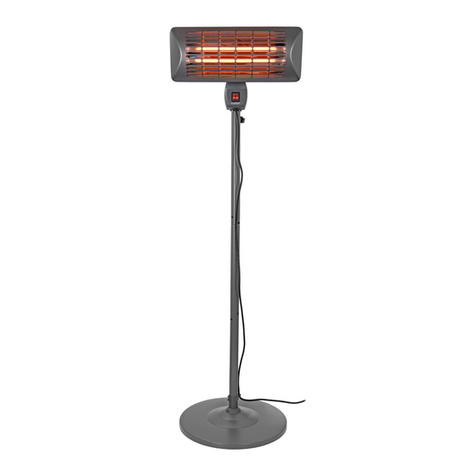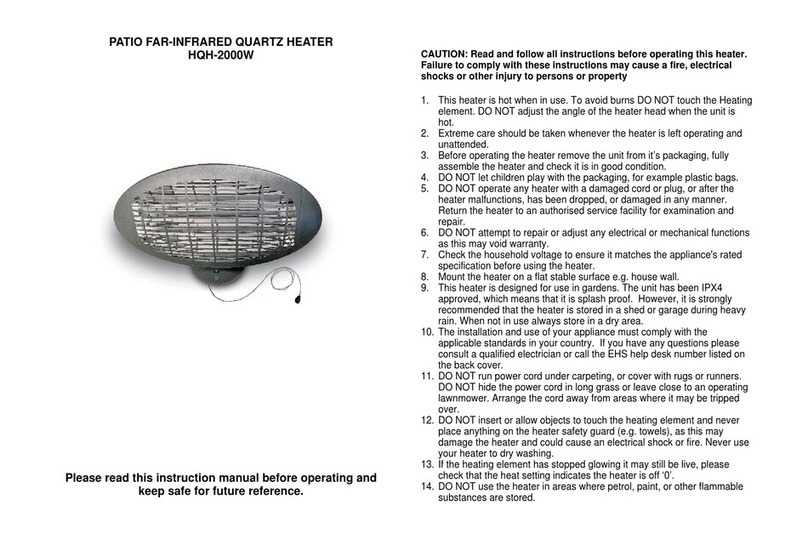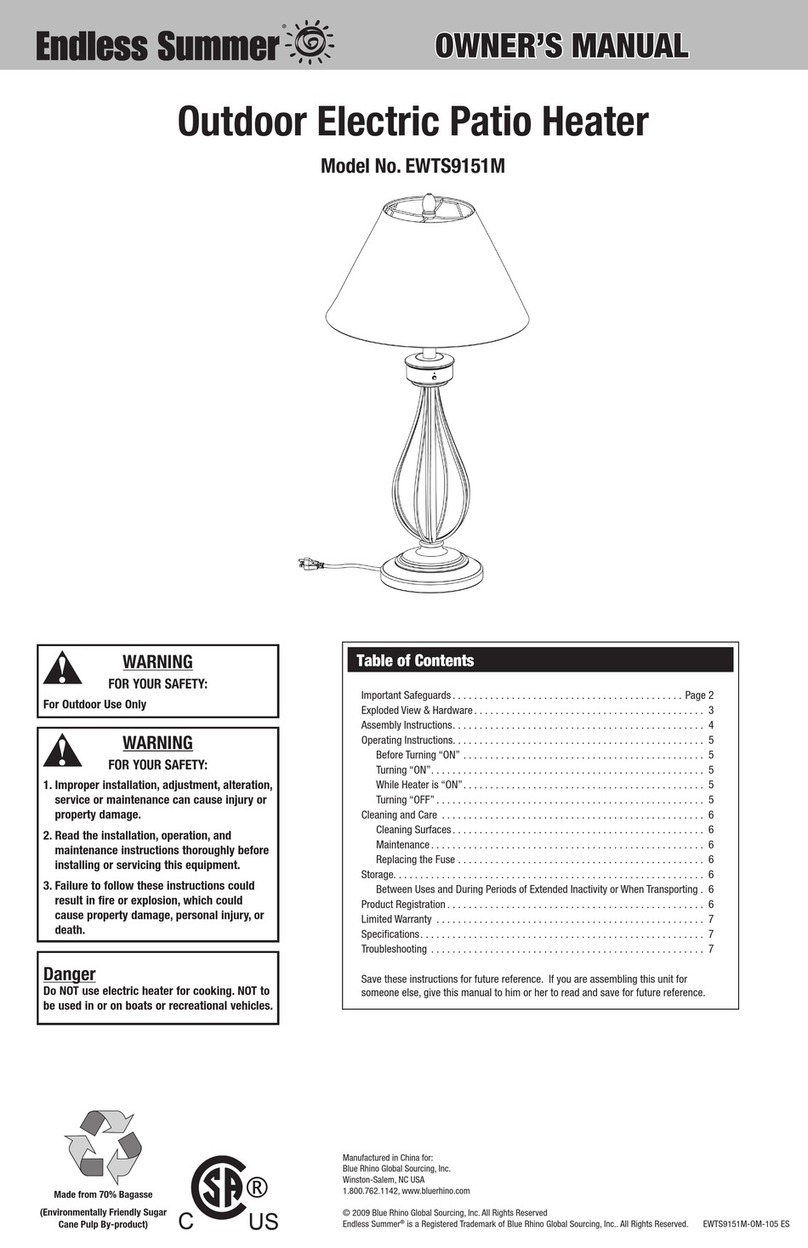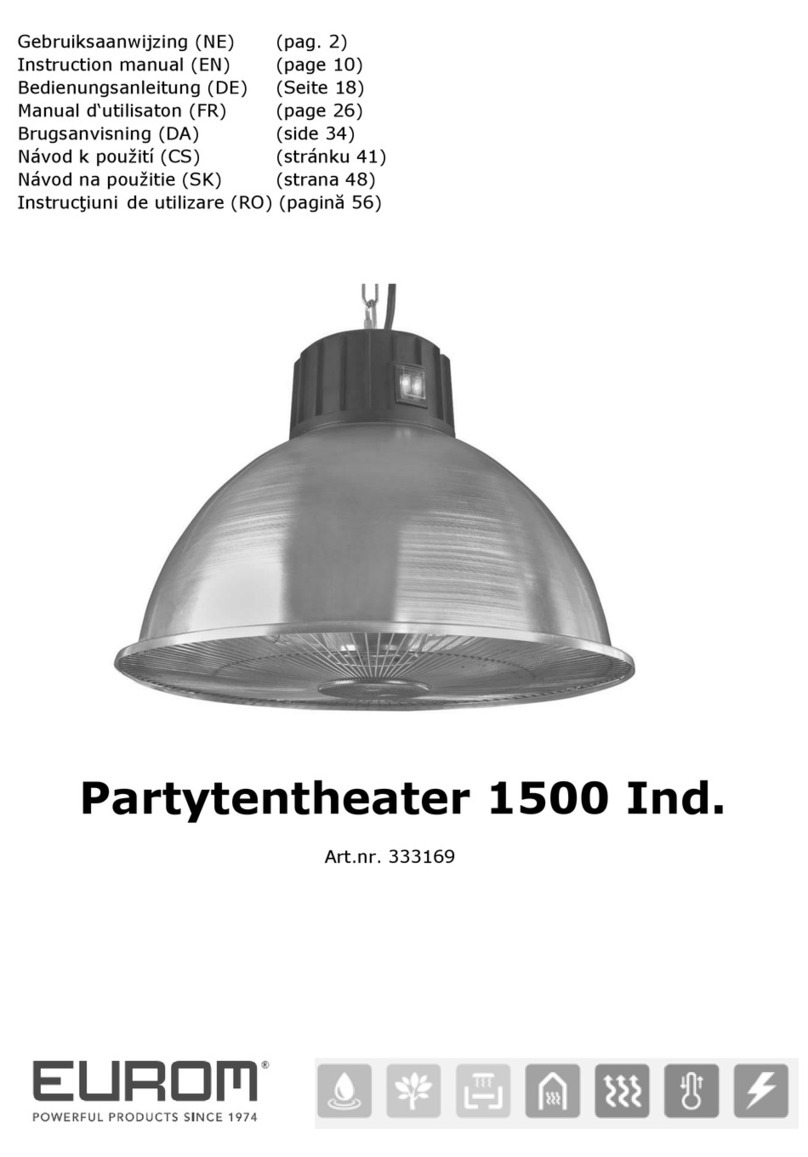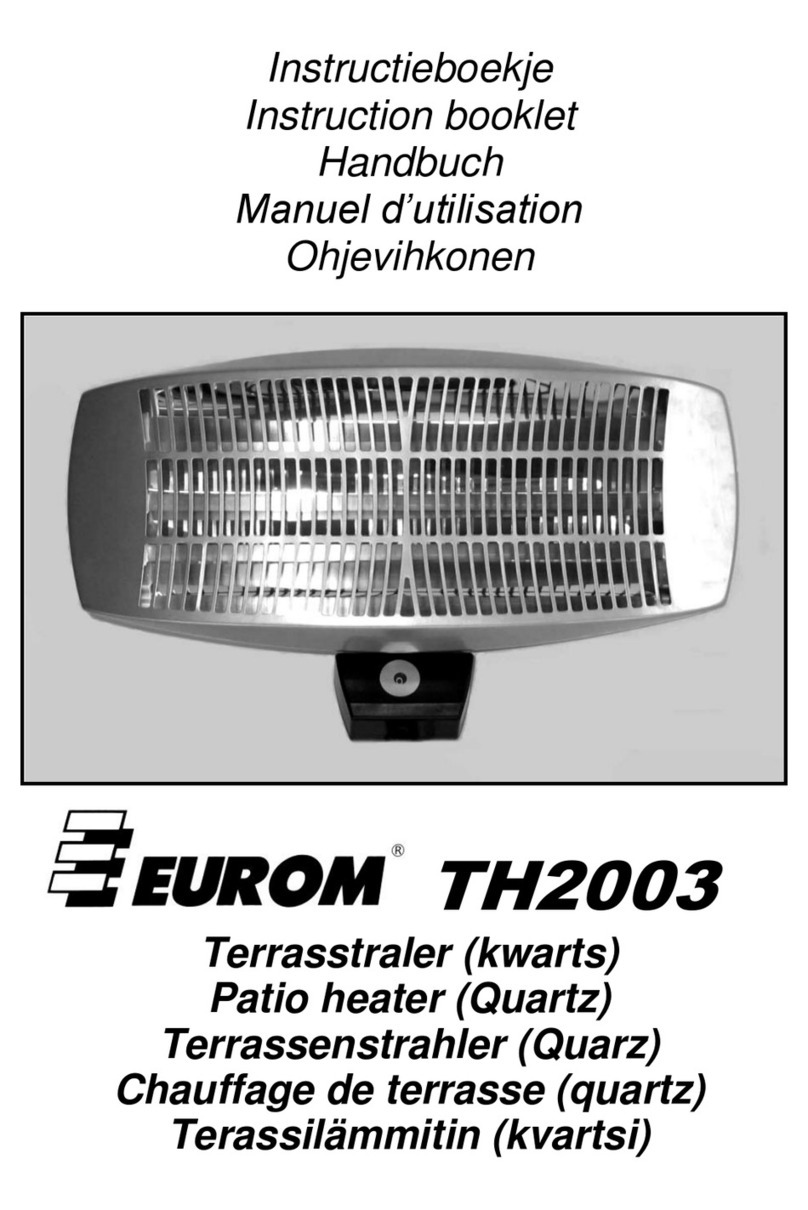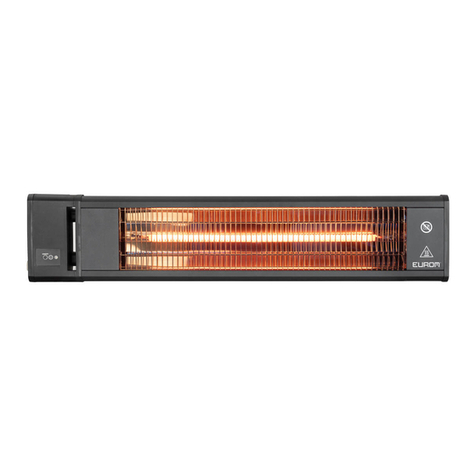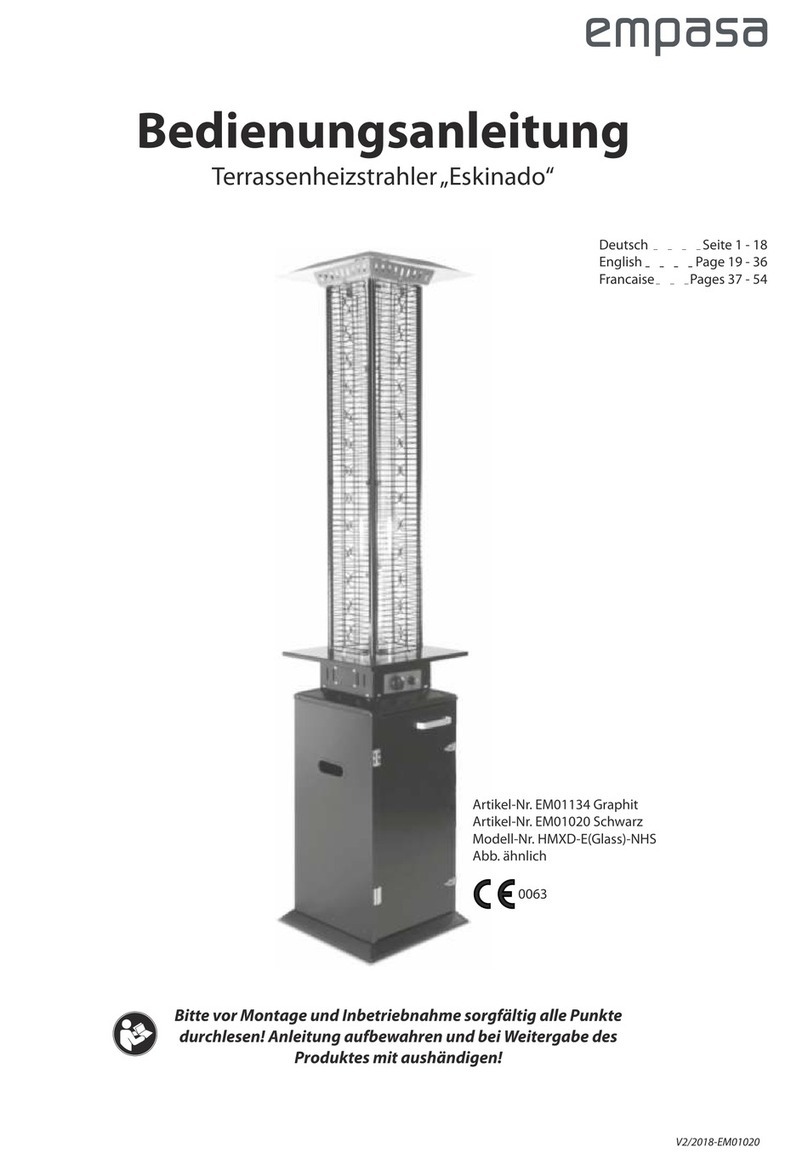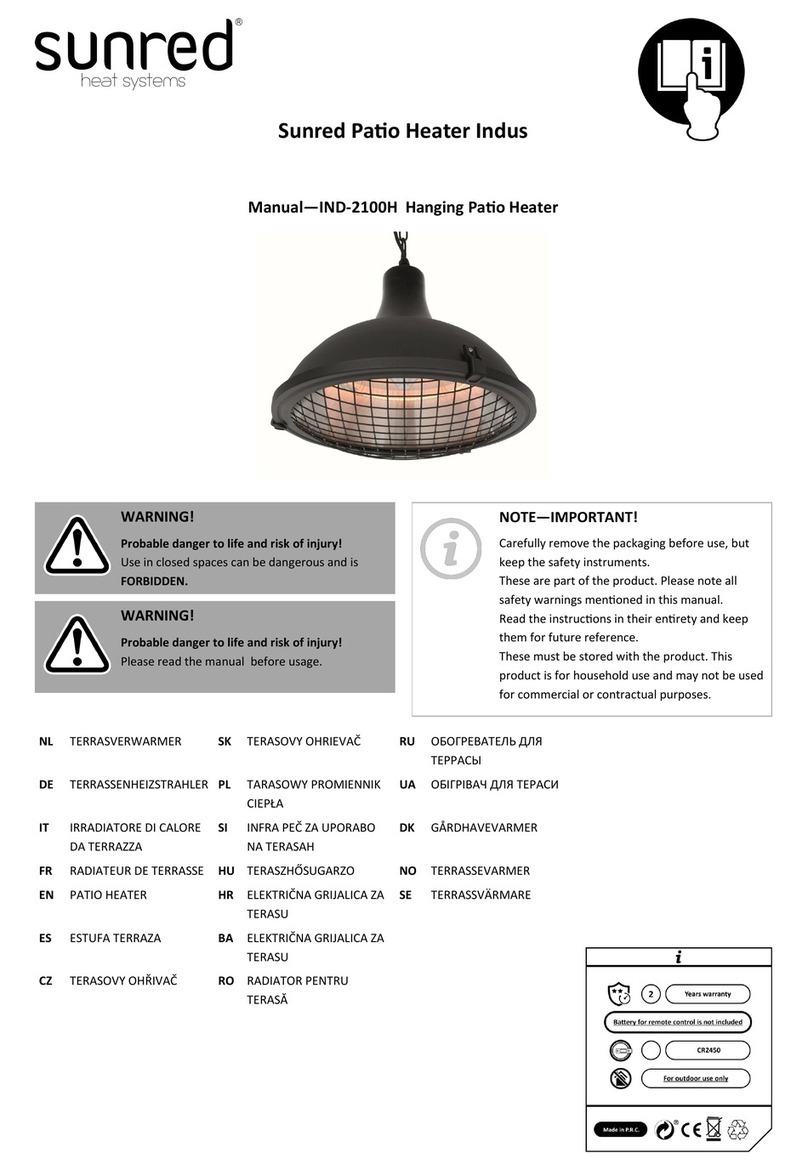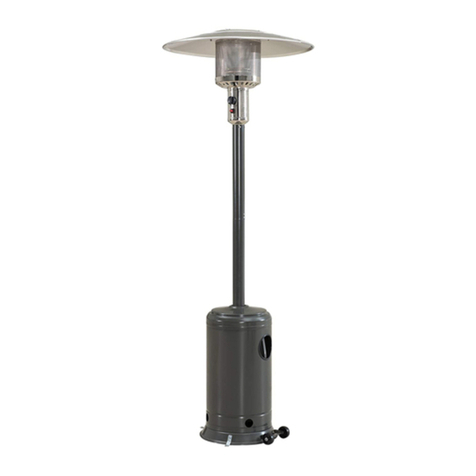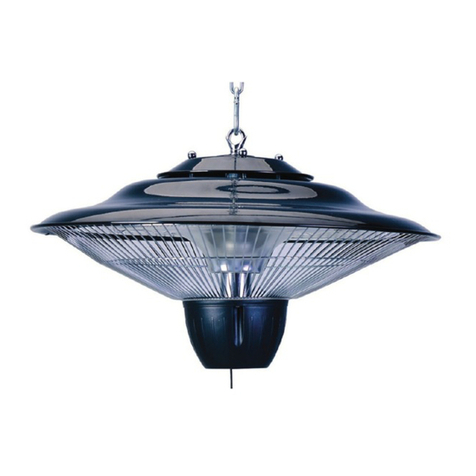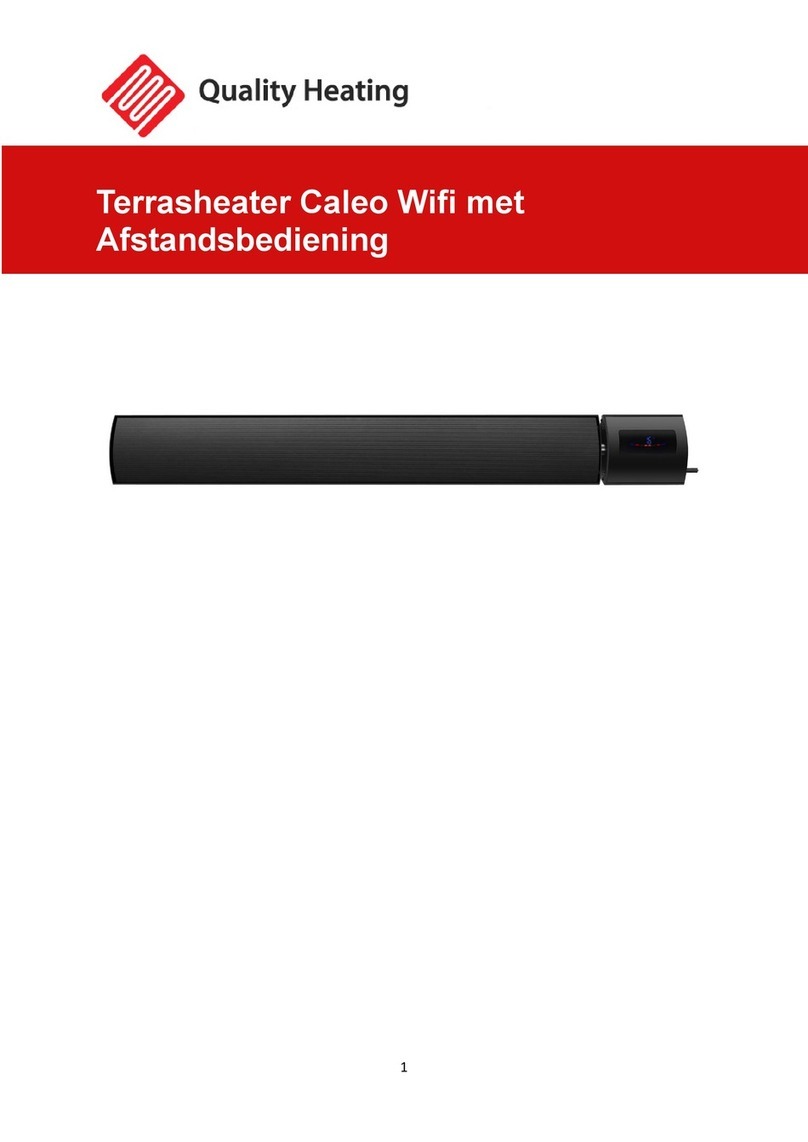- 18 -
EN
THANKS
Many thanks for selecting a EUROM patio heater. You have made a very good choice! We hope that you
will be completely satisfied with the product.
In order to get the very best from your patio heater, it is important that you read and make sure you
understand this instruction leaflet thoroughly and completely before use. Pay particular attention to the
safety regulations: they are provided to protect both you and the environment!
Keep the instruction leaflet somewhere safe so that you can consult it in future. Retain the packaging
too: this is the best protection for your patio heater when storing it out of season.
GENERAL SAFETY GUIDELINES
Only use propane or butane gas.
Shut the gas bottle valve or gas regulator after use.
Read the instruction leaflet for this device before use.
This devic The surface-area of the walls is the sum of the total surface-area. e is to be used outdoors
and in spaces that are well ventilated. Do not use in caravans, campers, boats etc.
A well ventilated room is one where 25% of the wall surface-area is open. The surface-area of the
walls is the sum of the total surface-area.
Use in enclosed spaces is dangerous and is FORBIDDEN.
This device must be installed according to the instructions and legal regulations.
System category: A.
The ventilation openings in the gas bottle casing should never be blocked. Keep them free from dirt.
The use of gas bottles corresponds to legal regulations. Install and keep gas bottles according to
these regulations. Never use gas or other flammable liquids in the patio heater other than the propane
or butane gas stipulated by the manufacturer. This gas must be contained in EU approved gas
cylinders with a safety valve. Never use a gas bottle
with visible damage to its surface, valve, ring or base!
Replace the gas bottle outdoors and away from fire, sparks and other sources of ignition.
Replace the flexible hose every 3 to 4 years.
Try not to change the device in any way. Incorrect installation, irresponsible use, changes or
modifications to the device could cause damage or lead to injury. The manufacturer and importer
accept no liability in this instance!
Only use the regulator that is supplied by the manufacturer (this applies to replacements too).
The entire gas system, hose regulator, pilot light and burner must be checked before use, after the
gas bottle has been changed and afterwards at least once each month. All checks for leaks must
be carried out with a soapy solution; never with a naked flame! Never use the heater until all
connections and leaks have been checked. Do not smoke when carrying out these checks.
Shut the valve on the gas bottle if you smell gas. Gas is flammable, explosive and heavier than air; it
will therefore remain low. In its natural state, propane gas does not smell; an odour, which smells like
rotten cabbage, has however been added for your safety.
Never move the patio heater while it is on. Shut the gas bottle and allow the patio heater to cool down
before moving the device.
If the patio heater is not being used, shut the gas bottle and switch the device to OFF.
Regularly check whether the connections on the gas regulator are suitable and in good condition.
The operating panel, burner and the air passage must be cleaned regularly. Ensure that all of the
components removed for cleaning are replaced again afterwards!
Do not paint the flame screen, operating panel or reflector cap.
Make sure that the gas regulator and hose are always situated in a location where they cannot be
damaged and where nobody can trip over them.
Use the heater for its intended purpose only, i.e. heating a patio or a similar location. It is not intended
to be used to heat halls, greenhouses, bars or similar or for drying textiles or other damp objects.






